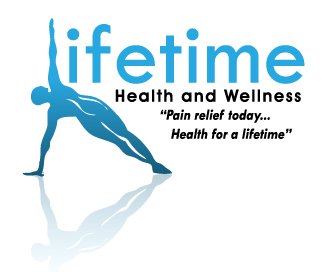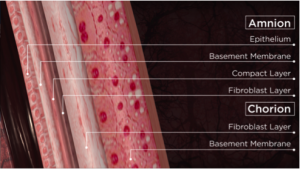Lifetime Health and Wellness
Suzanne Somers And Hormone Optimization With Bio Te
Optimize Male Hormones
The primary goal of BioTE® Medical is to help optimize the hormone levels of men. Bio-identical hormone replacement therapy pellets are inserted under the skin to assist you with hormone balance. Learn about our process and how to experience wellness with optimized hormones below!
How can I get started with Bio-identical Hormone Replacement Therapy?
Getting started with bio identical hormone replacement therapy with BioTE Medical is easy as scheduling an appointment! Simply call our office at 847-717-3400
What is the goal of Hormone Optimization Therapy in Men?
The goal of hormone optimization therapy is to provide all our patients with a sense of wellbeing. This could mean a return to the balance they once knew or it could also mean providing a balance never felt by the patient before. In addition to feeling great, hormone optimization may be able to help reduce the risk of certain diseases as well as the severity of certain afflictions.
What is Bio-identical Hormone Replacement Therapy?
After only a few minutes during an in-office visit, Bio-identical Hormone Replacement Therapy (BHRT) for men begins to work to optimize hormones within 7-10 days. Pellet therapy is customized to your unique physiology based on your test results. Because of this, every treatment is tailored to the patient and will have the greatest possible success in helping achieve balance. Furthermore, BHRT uses bio-identical hormones derived from plants, not animals, which more closely resembles the hormones naturally present within men and women than synthetic or animal derived hormones.
What can I expect from BHRT?
Your first appointment with your certified BioTE provider will include hormone testing. The next appointment will be to review your tests, in which BHRT pellet insertion can be done during this visit.
What is BioTE Medical?
BioTE Medical only offers bio-identical hormone replacement therapy in the form of subcutaneous pellets and with almost 1 million insertions performed in the company’s history, we have seen many lives changed with optimized hormones. If any of the hormone imbalance symptoms mentioned above ring a bell for you, or remind you of someone you love, BioTE Medical encourages you to call Lifetime Health and Wellness at 847-717-3400 to begin your journey to wellness today.
Joint Pain Relief with Amniotic Membrane in Elgin
Human amniotic membrane is comprised of the innermost layer of the placenta and lines the amniotic cavity. The membrane is composed of multiple layers including a single layer of epithelial cells, a basement membrane and an avascular connective tissue matrix. The tissues of the placenta present a very complex interrelationship of materials that possess numerous physiologic characteristics, that can in turn change in importance with the appropriate stage of gestation. During pregnancy, the placenta permits the passage of nutrients, metabolites and metabolic gases, and provides physical and immunological protection to the developing fetus. In addition, it produces a variety of steroids and important metabolic hormones.
Amniotic membrane is a unique material and its composition contains collagen types I, III, IV, V, and VII. Amniotic membrane is composed of structural extracellular matrix (ECM), that also contains specialized proteins fibronectin, laminins, proteoglycans and glycosaminoglycans. In addition, amniotic membrane contains essential, active, healing growth factors such as epidermal growth factor (EGF), transforming growth factor beta (TGF-b), fibroblast growth factor (FGF), and platelet derived growth factor (PDGF).8 Amniotic tissues have shown little to no HLA-A, B, C antigens and β2 microglobulin.3
References:
- Niknejad H; Peirovi H; Jorjani M; Ahmadiani A; Ghanavi J; Seifalian AM “Properties of the amniotic membrane for potential use in tissue engineering.” Eur Cell Mater. (15). 01-JAN-2008. pp 88 – 99.
- Rahman I; Said DG; Maharajan VS; Dua HS “Amniotic membrane in ophthalmology: indications and limitations.” Eye. (23)10. 2009. pp 1954–1961.
- Baradaran-Rafii A; Aghayan H; Arjmand B; and Javadi M. “Amniotic Membrane Transplantation.” Iran J Ophthalmic Res. (2)1. 2007. pp 58-75.
- John, T. “Human amniotic membrane transplantation: Past, present, and future..” Ophthal Clin N Am. (16). 2003. pp 43-65.
- Adly OA; Moghazy AM; Abbas AH; Ellabban AM; Ali OS; Mohamed BA “Assessment of amniotic and polyurethane membrane dressings in the treatment of burns.” Burns – 01-AUG-2010; 36(5): 703-10.
- Huiren Tao & Hongbin Fan “Implantation of amniotic membrane to reduce postlaminectomy epidural adhesions.” Eur Spine J – 01-AUG-2009; 18(8): 1202-12. (). 2009.
- Arora R; Mehta D; Jain V “Amniotic membrane transplantation in acute chemical burns.” Eye (Lond). (19)3. 01-MAR-2005. pp 273-8.
- Kay H; Nelson D; Wang Y. “The Placenta: From Development to Disease.” Wiley-Blackwell. 2011.
This doctors personal experience with BioTe hormone replacement.
What Patients say about Bio Te Hormone Replacement Therapy
S. Elgin Chiropractor Helps HeadAche sufferers
Most of us experience the occasional headache. Whether it’s throbbing, aching, pounding or stabbing, a head-ache can make our lives miserable. It also affects our ability to focus and may increase our sensitivity to external stimuli.
There are several types of headaches, and each one has a different cause. The most common headaches are tension, migraine, cervicogenic and cluster. Migraines are often considered to exist in a category of their own. (We’ll discuss migraines in the next issue of Topic of the Week.)
Tension Headache
The tension headache is the most frequent type of headache in the general population.1 It usually occurs most frequently in people susceptible to the effects of stress. This headache usually starts with tightness in the neck and shoulders, then progresses to pain at the base of the skull. The forehead and temples may also ache.
Cervicogenic Headache
A cervicogenic headache originates from disorders of the neck. This type of headache is often preceded by awkward neck movement or position-ing (such as painting a ceiling, or washing a floor). It’s usually accom-panied by restricted range of motion in the neck and pain in the shoulder, neck or arm.
Treatment for Tension and Cervicogenic Headaches
A frequent cause of both tension and cervicogenic headaches is irrita-tion of the nerves leading to the scalp. These nerves exit the spine close to the base of the skull and pass around or directly through several layers of muscle tissue. If this area of the spine is restricted or the muscles in this location are extra tight, the nerves in the scalp can get irritated. When related with neck pain and stiffness, these headaches can generally be effectively treated with chiropractic.2- 5 Sometimes the relief from chronic headaches can be immediate and dramatic.6
Massage and trigger point therapy applied to the tight muscles may also reduce the symptoms associated with this type of headache.
Cluster Headache
Cluster headaches are relatively rare, affecting only 0.1% of the population. About 85% of cluster headache sufferers are male.7This headache is distinct from migraine and tension headaches. It typically features intense bouts of stabbing pain felt in very specific focal areas of the skull. The pain usually occurs in clusters, and it can last from minutes to hours. The discomfort typically centers around one eye, and this eye may be inflamed and watery. Nasal congestion sometimes occurs on the affected side of the face. It’s suspected that cluster headaches are related to the sinuses. This type of headache is not usually as responsive to chiropractic treatments as other headaches. But it’s a good idea to have your chiropractor check your neck to rule out any involvement of this area.
What Can I Do to Prevent Headaches?
Follow these simple tips: Manage your stress – try meditation, relaxation exercises and taking regular breaks from your schedule. Exercise regularly – cardiovascular exercise helps your muscles, circulatory system and sense of well being.Watch your posture – the muscles that hold your head upright are the same as those that contribute to headaches. Practice good posture to reduce stress on these muscles. Drink plenty of fresh water, dehydration is a common cause of headaches, muscle tightness and fatigue. Drink a minimum of eight cups per day.Have your spine checked regularly for misalignment/subluxations by your South Elgin chiropractor, DR Tim Schening – correcting misalignment before symptoms appear can save you a lot of grief.
References and Sources:
1. Loder E & Rizzoli P. Clinical Review:Tension-type headache. BMJ 2008; 336: 88-92.2. McCrory DC, Penzien DB,HasselbladV & Gray RN. Evidence Report: Behavioral and Physical Treatments for Tension-type and Cervicogenic Headache.Duke University Evidence-basedPractice Center, Center for ClinicalHealth Policy Research. Durham NC.3. Bronfort G, Assendelft WJ, Evans R, Haas M & Bouter L. Efficacy of spinal manipulation for chronic headache: a systematic review. J Manipulative Physiol Ther. 2001; 24(7): 457-466.4. Haas M, Groupp E, Aickin M, Fairweather A, Ganger B, Attwood M, Cummins C & Baffes L. Dose response for chiropractic care of chronic cervicogenic headache and associated neck pain: a randomized pilot study. J Manip Physiol Ther. 2004; 27(9): 547-553.5. Nilsson N, Christensen HW & Hartvigsen J. The effect of spinal manipulation in the treatment of cervicogenic headache. J Manip Physiol Ther. 1997; 20(5): 326-330.6. Lisi AJ & Dabrowski Y. ChiropracticSpinal Manipulation for CervicogenicHeadache in an 8-Year-Old.J Neuro – musculoskeletal System 2002; 10(3): 98–103.7. Fischera M, Marziniak M, Gralow I & Evers S. The incidence and prevalence of cluster headache: a meta-analysis of population-based studies.Cephalgia. 2008; 28(6): 614 – 618.



